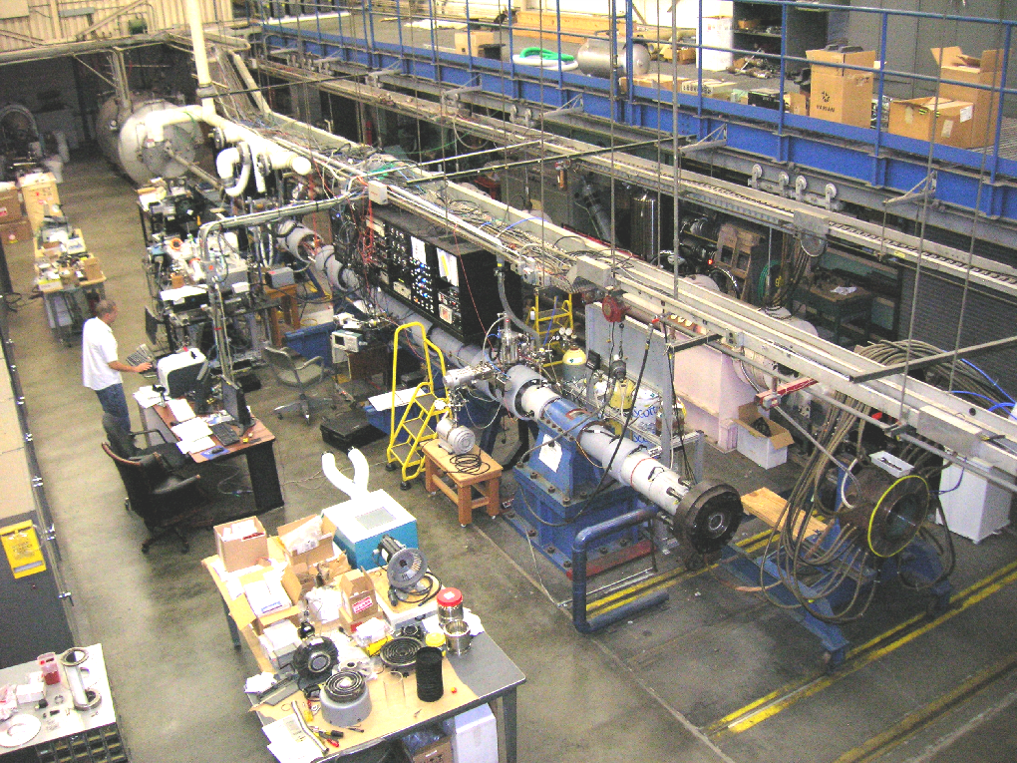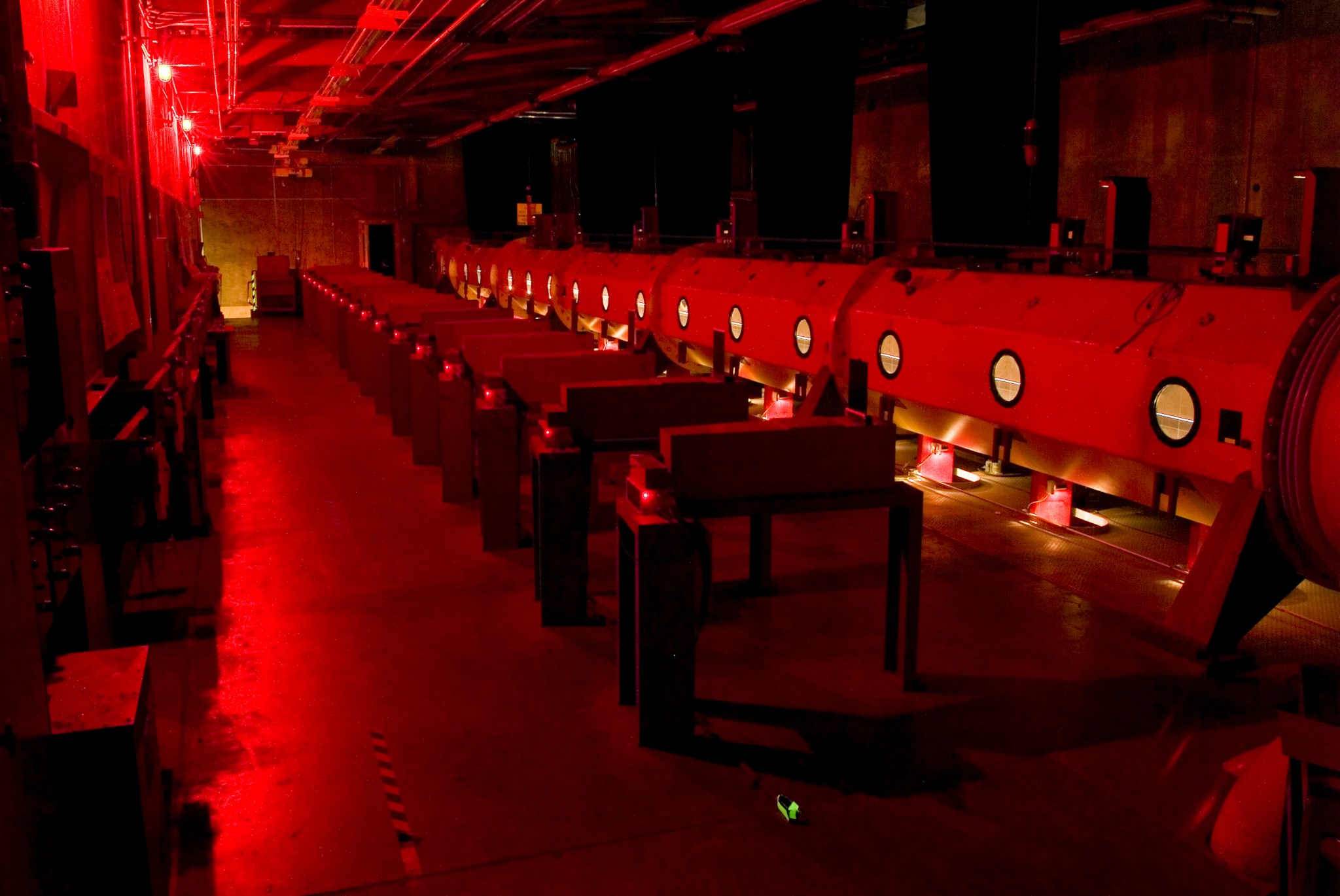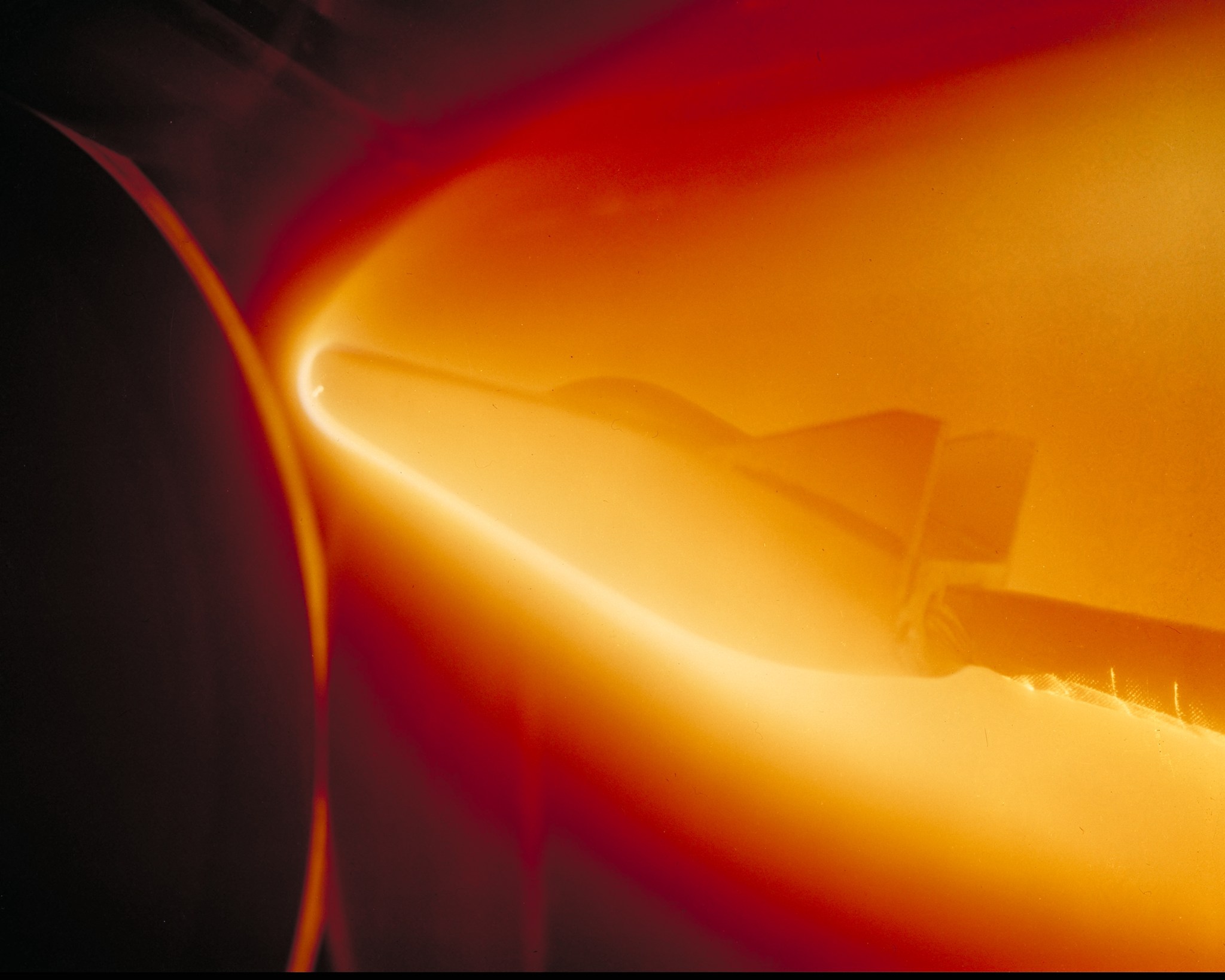Electric Arc Shock Tube (EAST)
The Electric Arc Shock Tube is the agency’s only facility that can exactly replicate conditions of planetary entry in terms of velocity, pressure and gas composition for short (several microsecond) durations. The EAST facility is used to measure shock layer radiation and reaction kinetics, which have similarity to flight when velocity and freestream pressure are matched. Shock layer radiation is measured simultaneously with four spectrographs which span from the vacuum ultraviolet through mid-infrared. A tunable diode laser absorption spectroscopy capability was recently introduced which can track molecular temperature and concentrations behind the shock. This data may be used to build and/or validate the model kinetics and radiative heating terms which determine entry heating. The Aerothermodynamics Branch serves as principal investigators for tests and performs data analysis and reduction.
Click here to visit the EAST data website
The Hypervelocity Free-Flight Aerodynamic Facilities (HFFAF)
The HFFAF launches models in free flight which are then photographed as they traverse the 23m long test section. The HFFAF is unique in that the facility is enclosed and may be evacuated and filled with different gases at sub-atmospheric pressures, thus making the tests relevant to entry conditions. Flight speeds between 0.2 – 8.5 km/s have been obtained in a variety of atmospheres, including air, N2, CO2, He/H2 and Ar. Recent tests in the HFFAF have focused on measuring scale model aerodynamics and aerothermodynamics, including dynamic stability, aerodynamic forces and moments, and aerothermodynamic heat fluxes on both the fore and afterbody. Heating studies have paid particular attention to turbulent transition and heat flux augmentation due to surface roughness.
Arc Jet Complex
The Ames Arc Jet Complex has seven available test bays. At the present time, four bays contain Arc Jet units of differing configurations, serviced by common facility support equipment. These are the Aerodynamic Heating Facility (AHF), the Turbulent Flow Duct (TFD), the Panel Test Facility (PTF and TPTF), and the Interactive Heating Facility (IHF). The support equipment includes two D.C. power supplies, a steam ejector-driven vacuum system, a water-cooling system, high-pressure gas systems, data acquisition system, and other auxiliary systems.
The aerothermal environments of an arc jet test are characterized and predicted with high confidence by the Aerothermodynamics Branch. Experimental activities within the arc jet include flow monitoring by emission spectroscopy and laser induced fluorescence. Branch members occasionally serve as test PIs and have contributed to improved understanding of heat flux measurements and measurement of flow enthalpy within the facility.


























